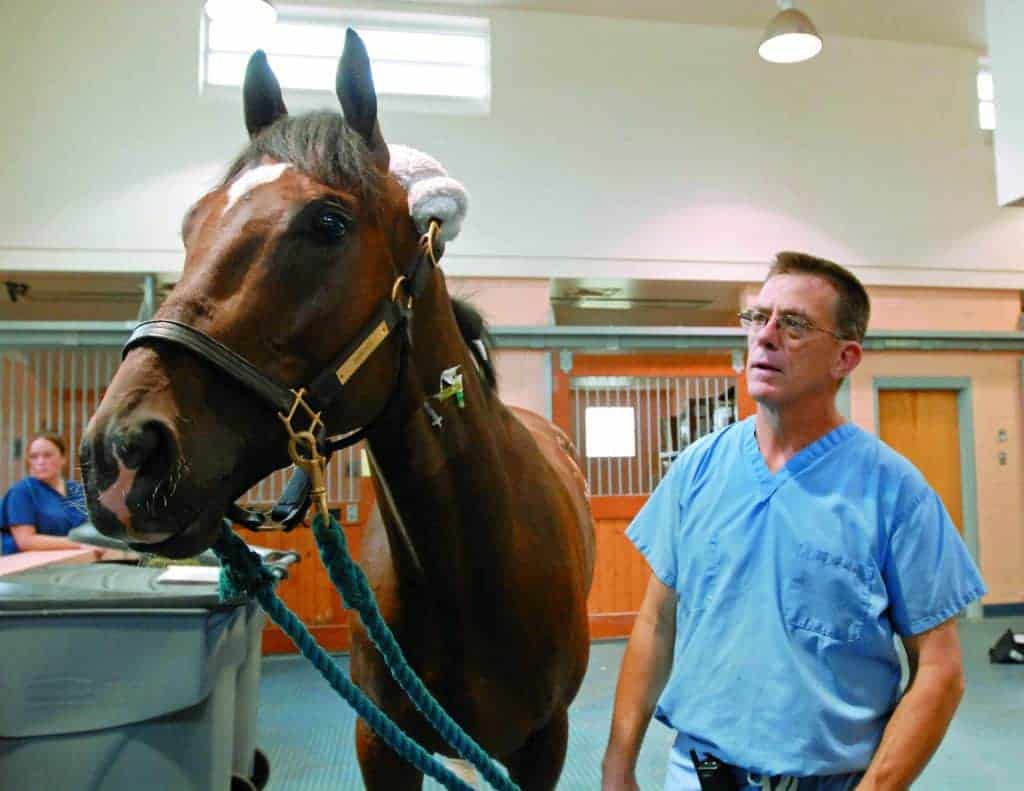
Surgical Repair of Hock Fractures in Sport Horses Successful
Researchers say a screw fixation procedure can help sport horses return to function after a central tarsus fracture.

Researchers say a screw fixation procedure can help sport horses return to function after a central tarsus fracture.

A researcher offers tips on how veterinarians can pinpoint the cause in unresolved upper hind limb lameness cases.

A horse with a vertebral fracture without severe neurologic disorders could be a good candidate for surgical repair.

A horse’s eye is one of his most functional and aesthetically pleasing features, so when an eye injury occurs, it can be unsettling for both him and his owner. In this article, one veterinarian shares the top five eye injuries she sees in her practice, as well as what to expect for treatment and recovery.

As a result, one vet said efforts to prevent laminitis of common origins could reduce the disease’s impact more.

Radiographic abnormalities don’t always result in diminished performance; however, many do. Here’s what to know.

Dr. Mick Peterson found that the dirt surface met all of the pre-meet test criteria and was maintained properly.
The two veterinarians and one clinical technician are developing sports medicine and rehab services at NC State.

The racehorse welfare and safety summit also covered racetrack surfaces, continuing education, and more.

Researchers determined that if horses were discharged from the hospital, a good long-term outcome was likely.

Researchers say MRI might be useful as a screening test to identify racehorses at increased risk of fetlock fracture.

Hoof-related issues are a hot topic in veterinary medicine. Here’s what practitioners discussed at a recent meeting.

Using proper diagnostic technique and good quality radiographs is critical when diagnosing these fractures in foals.

Dr. Dean Richardson will present examples of current state-of-the-art equine fracture treatments.

Researchers are studying and using everything from MSCs to PRP and ACS to BMPs. Here are the basics you should know.
The incidence of fatal injury for 2014 was 1.89 per 1,000 starts, compared to 1.90 per 1,000 starts in 2013.
Stay on top of the most recent Horse Health news with
"*" indicates required fields